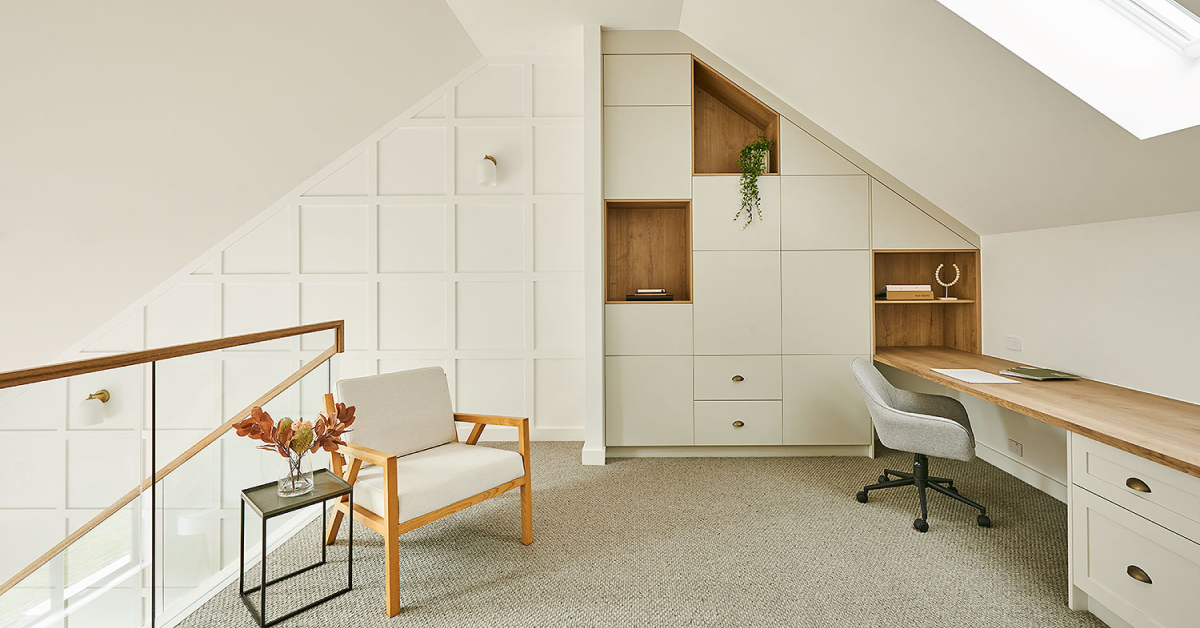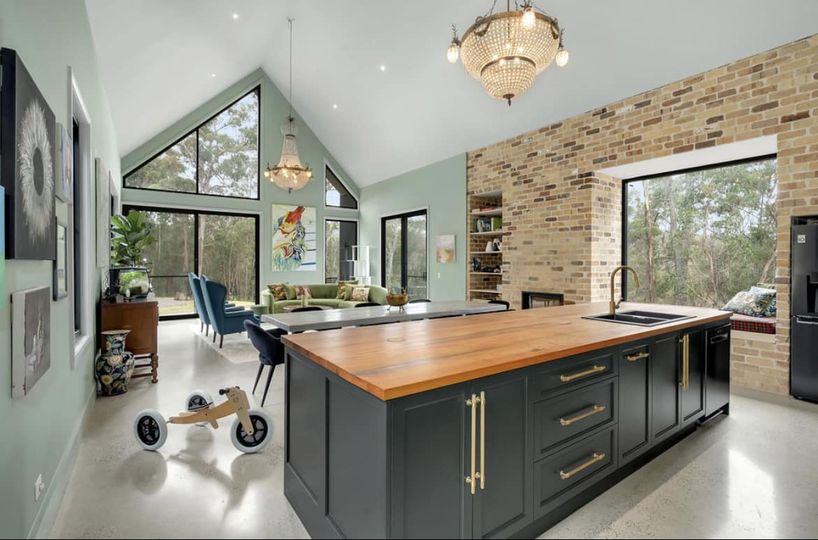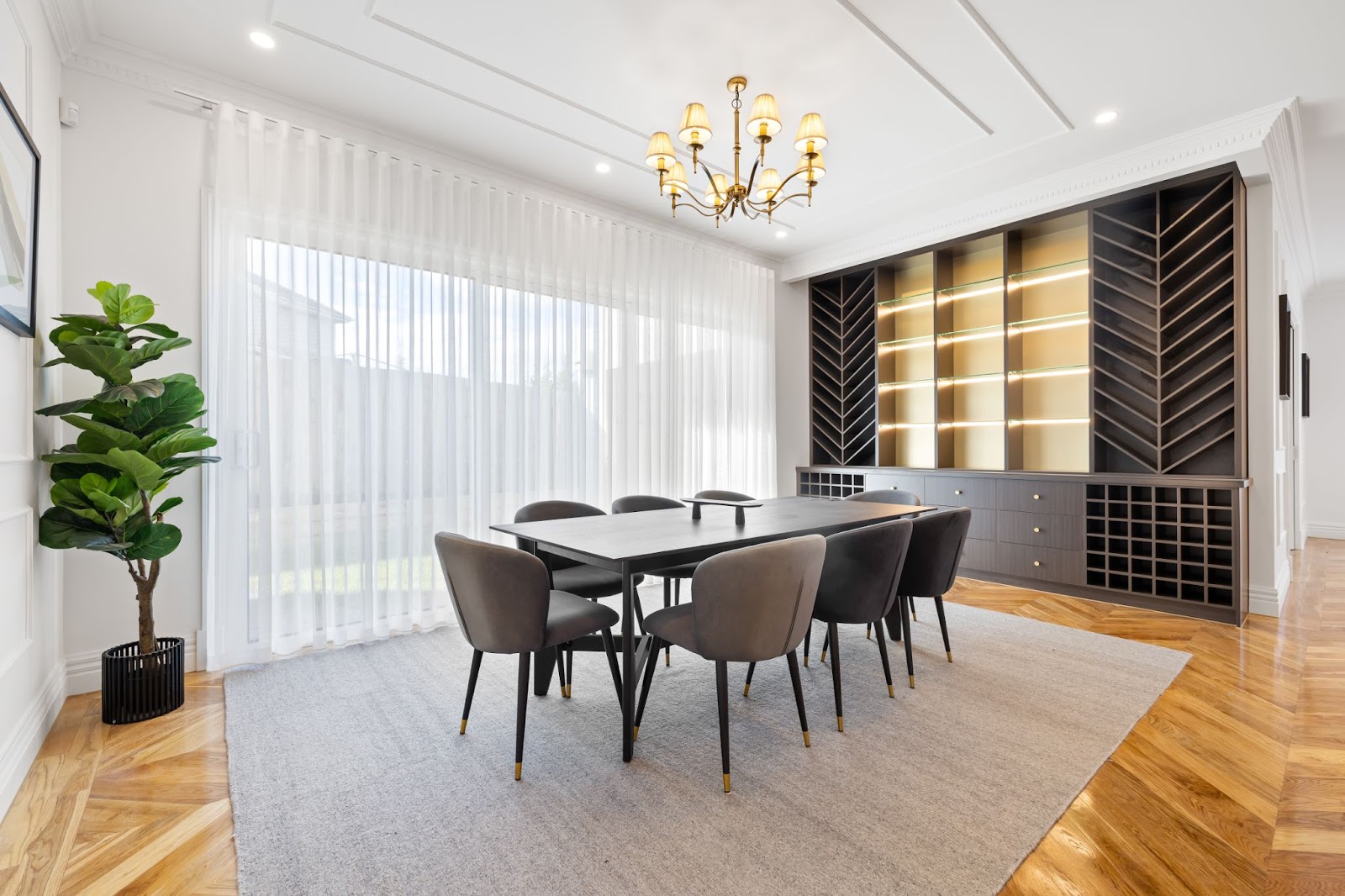Creating a minimalist home is about more than just aesthetics; by focusing on the essentials and eliminating clutter, minimalist design seeks to convey a sense of internal calm.
Spaces that fall within a minimalist design aesthetic are typically defined by clean lines, limited ornamentation, a neutral colour scheme, and natural materials.
Whether you’re starting from scratch or looking to simplify your existing home, these practical tips will guide you in achieving the minimalist look and creating a space that is both beautiful and functional.
1. Embrace Open Spaces
Open-Plan Layouts
A key element of minimalist design is the use of open spaces. This means creating rooms that are airy and free from unnecessary partitions.
Opt for open-plan layouts where possible, allowing for a seamless flow between different areas of the home. This not only maximises space but also promotes a sense of freedom and ease.
Builders like Simonds and Eight Homes offer excellent open-plan designs that can help you achieve this look.
Simonds Homes
Minimal Furniture
Keep the furniture to a minimum to avoid cluttering the space. Each piece should have a purpose and complement the overall design.
Look for sleek designs with clean lines, and avoid overly ornate or bulky items.
2. Neutral Colour Palettes
Calming Tones
Minimalist homes typically feature neutral colour palettes, such as whites, greys, and earth tones. These colours help to create a calm and cohesive environment.
Use these tones for walls, floors, and major furniture pieces. Accents in natural wood or metal can add warmth and interest without disrupting the serene atmosphere.
Hamlan Homes does a fantastic job of this, with elegant facades, & attention to detail in their interior spaces.

Hamlan Homes
Consistent Colour Scheme
Maintain a consistent colour scheme throughout the home to enhance the minimalist aesthetic and create a unified look.
3. Declutter and Organise
Essential Items Only
Decluttering is a fundamental step in achieving a minimalist home. If you’re moving house, it can be a good opportunity to consider what’s worth keeping, and what to donate. If not, take it one room at a time (or one cupboard at a time), addressing the easier tasks first.
Hidden Storage Solutions
Use hidden storage solutions, like built-in cabinets and under-bed storage, to keep surfaces clear and maintain a tidy appearance. Clever storage solutions can make even the smallest spaces feel spacious and uncluttered.
4. Incorporate Natural Light
Large Windows
Natural light plays a crucial role in minimalist design. Large windows and open spaces allow sunlight to flood into the home, enhancing the sense of openness and reducing the need for artificial lighting.
Proper window orientation can significantly affect the amount of natural light, so consider this when designing your space.

David Reid Homes
Light Window Treatments
Consider using sheer curtains or blinds that can be easily drawn back to let in as much light as possible. This approach not only brightens your home but also maintains the minimalist aesthetic by keeping window treatments simple and functional.

Singh Homes
5. Simple Decorative Elements
Less is More
When it comes to decorations, less is more in a minimalist home. Select a few key pieces that add personality without cluttering the space. This could include a single piece of art, a strategically placed plant, or a minimalist clock.
The idea is to let each item stand out and contribute to the overall aesthetic without overwhelming the senses. Opt for decorations that have a personal meaning to you and will enhance the look of your place.
Functional Decor
Choose decor items that also serve a function, such as stylish storage baskets or minimalist lighting fixtures. This dual-purpose approach not only enhances the beauty of your home but also maximises efficiency and utility, keeping your space both beautiful and practical.
6. Sustainable Materials
Eco-Friendly Choices
Minimalism often goes hand in hand with sustainability. Choose materials that are eco-friendly and durable, such as reclaimed wood, bamboo, or recycled metals. These not only contribute to a cleaner environment but also add a touch of natural beauty to your home.
Long-Lasting Materials
Opt for materials that are long-lasting and require minimal maintenance to keep your home looking its best with minimal effort.

AHR Builders
The Minimalist Mindset
Intentional Living
Adopting a minimalist design isn’t just about changing your home’s appearance; it’s about embracing a mindset of simplicity and intentionality.
It involves being mindful of what you bring into your space and prioritising quality and purpose over quantity. By focusing on what truly matters, you can create a home that supports a peaceful and fulfilling lifestyle.
The rise of minimalist home designs reflects a broader cultural shift towards simplicity and intentional living. By embracing open spaces, neutral colours, functional furniture, and thoughtful organisation, you can achieve the minimalist look in your own home.
Whether you’re starting from scratch or looking to simplify your existing home, these tips can help you create a beautiful, minimalist space that’s both functional and inspiring. Embrace the minimalist mindset and discover the tranquillity that comes with living with less.
Publisher Website: www.homeshelf.com.au